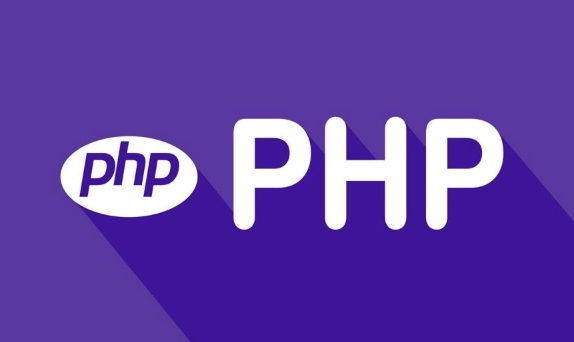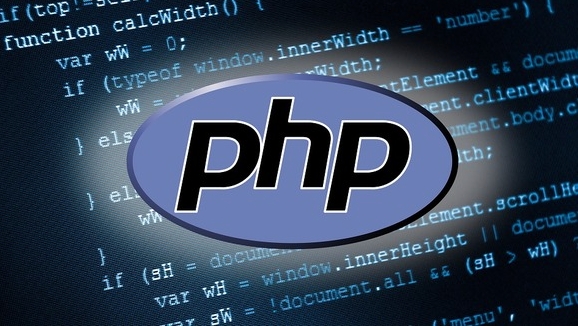PHP environment setup: Integration of Apache, MySQL, and PHP
Jun 29, 2025 am 01:25 AMSetting up a PHP development environment requires integrating Apache, MySQL and PHP. Install Apache: Windows can be installed with one click with XAMPP, Linux can be installed and started services through apt or yum; configure MySQL: run a secure initialization script after installation and test the connection; integrate PHP: add modules and handlers in the Apache configuration file, and verify through phpinfo(); precautions include paths, permissions, version compatibility and log troubleshooting. Follow the steps to complete the environment construction.

Setting up a PHP development environment is actually not difficult. The key is to correctly integrate Apache, MySQL and PHP. This article talks about how to set them up step by step so that you can run PHP programs smoothly.

Install Apache: Build the server foundation
Apache is a commonly used Web server software that handles HTTP requests and responses. Before installing, make sure that your system does not come with it or has Apache installed to avoid conflicts.

On Windows, you can use XAMPP integration packages to install in one click; Linux users can install them through apt or yum :
sudo apt update sudo apt install apache2
After the installation is complete, start Apache and visit http://localhost . If you see the default page, it means that the installation is successful. Pay attention to check whether the firewall has released port 80.

Configuring MySQL: Database support cannot be missing
Many PHP projects require a database connection, and MySQL is one of the most common choices. You can install MySQL separately or continue to use the version in the XAMPP suite.
After the installation is completed, remember to run the security initialization script:
sudo mysql_secure_installation
This will help you set the root password, delete anonymous users, etc. Then test the connection through the command line or client tools (such as phpMyAdmin) to ensure that the database service is running normally.
Integrate PHP: Let dynamic content run
PHP is the core of the entire process. To make it work with Apache, the key is to configure Apache's module loading and PHP parser path.
If you are manually installing PHP, add the following to Apache's configuration file httpd.conf or apache2.conf :
LoadModule php_module "/path/to/php/php_module.so" AddHandler application/x-httpd-php .php
.dll files may be used in Windows, and the paths are written in different ways. Then restart Apache and create an info.php file test:
<?php phpinfo(); ?>
By accessing this file and seeing the detailed information of PHP, it means that the integration is successful.
Tips and FAQs
- Path error : Especially when manually configured, the paths of PHP and Apache are prone to be written incorrectly, and it is recommended to use absolute paths.
- Permissions issue : Running Apache under Linux may require appropriate adjustment of directory permissions.
- Version compatibility : Different versions of PHP support different Apache modules, and it is recommended to use a stable version combination.
- Log troubleshooting : Don’t panic when encountering problems. First look at the log files of Apache and PHP. You can usually find the cause.
Basically, there are only these steps, which seem a bit too many, but each step is not complicated, it is just easy to ignore the details. As long as you take it step by step, you can develop it with peace of mind after the environment is built.
The above is the detailed content of PHP environment setup: Integration of Apache, MySQL, and PHP. For more information, please follow other related articles on the PHP Chinese website!

Hot AI Tools

Undress AI Tool
Undress images for free

Undresser.AI Undress
AI-powered app for creating realistic nude photos

AI Clothes Remover
Online AI tool for removing clothes from photos.

Clothoff.io
AI clothes remover

Video Face Swap
Swap faces in any video effortlessly with our completely free AI face swap tool!

Hot Article

Hot Tools

Notepad++7.3.1
Easy-to-use and free code editor

SublimeText3 Chinese version
Chinese version, very easy to use

Zend Studio 13.0.1
Powerful PHP integrated development environment

Dreamweaver CS6
Visual web development tools

SublimeText3 Mac version
God-level code editing software (SublimeText3)

Hot Topics
 How do I implement authentication and authorization in PHP?
Jun 20, 2025 am 01:03 AM
How do I implement authentication and authorization in PHP?
Jun 20, 2025 am 01:03 AM
TosecurelyhandleauthenticationandauthorizationinPHP,followthesesteps:1.Alwayshashpasswordswithpassword_hash()andverifyusingpassword_verify(),usepreparedstatementstopreventSQLinjection,andstoreuserdatain$_SESSIONafterlogin.2.Implementrole-basedaccessc
 How can you handle file uploads securely in PHP?
Jun 19, 2025 am 01:05 AM
How can you handle file uploads securely in PHP?
Jun 19, 2025 am 01:05 AM
To safely handle file uploads in PHP, the core is to verify file types, rename files, and restrict permissions. 1. Use finfo_file() to check the real MIME type, and only specific types such as image/jpeg are allowed; 2. Use uniqid() to generate random file names and store them in non-Web root directory; 3. Limit file size through php.ini and HTML forms, and set directory permissions to 0755; 4. Use ClamAV to scan malware to enhance security. These steps effectively prevent security vulnerabilities and ensure that the file upload process is safe and reliable.
 What are the differences between == (loose comparison) and === (strict comparison) in PHP?
Jun 19, 2025 am 01:07 AM
What are the differences between == (loose comparison) and === (strict comparison) in PHP?
Jun 19, 2025 am 01:07 AM
In PHP, the main difference between == and == is the strictness of type checking. ==Type conversion will be performed before comparison, for example, 5=="5" returns true, and ===Request that the value and type are the same before true will be returned, for example, 5==="5" returns false. In usage scenarios, === is more secure and should be used first, and == is only used when type conversion is required.
 How do I perform arithmetic operations in PHP ( , -, *, /, %)?
Jun 19, 2025 pm 05:13 PM
How do I perform arithmetic operations in PHP ( , -, *, /, %)?
Jun 19, 2025 pm 05:13 PM
The methods of using basic mathematical operations in PHP are as follows: 1. Addition signs support integers and floating-point numbers, and can also be used for variables. String numbers will be automatically converted but not recommended to dependencies; 2. Subtraction signs use - signs, variables are the same, and type conversion is also applicable; 3. Multiplication signs use * signs, which are suitable for numbers and similar strings; 4. Division uses / signs, which need to avoid dividing by zero, and note that the result may be floating-point numbers; 5. Taking the modulus signs can be used to judge odd and even numbers, and when processing negative numbers, the remainder signs are consistent with the dividend. The key to using these operators correctly is to ensure that the data types are clear and the boundary situation is handled well.
 How can you interact with NoSQL databases (e.g., MongoDB, Redis) from PHP?
Jun 19, 2025 am 01:07 AM
How can you interact with NoSQL databases (e.g., MongoDB, Redis) from PHP?
Jun 19, 2025 am 01:07 AM
Yes, PHP can interact with NoSQL databases like MongoDB and Redis through specific extensions or libraries. First, use the MongoDBPHP driver (installed through PECL or Composer) to create client instances and operate databases and collections, supporting insertion, query, aggregation and other operations; second, use the Predis library or phpredis extension to connect to Redis, perform key-value settings and acquisitions, and recommend phpredis for high-performance scenarios, while Predis is convenient for rapid deployment; both are suitable for production environments and are well-documented.
 How do I stay up-to-date with the latest PHP developments and best practices?
Jun 23, 2025 am 12:56 AM
How do I stay up-to-date with the latest PHP developments and best practices?
Jun 23, 2025 am 12:56 AM
TostaycurrentwithPHPdevelopmentsandbestpractices,followkeynewssourceslikePHP.netandPHPWeekly,engagewithcommunitiesonforumsandconferences,keeptoolingupdatedandgraduallyadoptnewfeatures,andreadorcontributetoopensourceprojects.First,followreliablesource
 What is PHP, and why is it used for web development?
Jun 23, 2025 am 12:55 AM
What is PHP, and why is it used for web development?
Jun 23, 2025 am 12:55 AM
PHPbecamepopularforwebdevelopmentduetoitseaseoflearning,seamlessintegrationwithHTML,widespreadhostingsupport,andalargeecosystemincludingframeworkslikeLaravelandCMSplatformslikeWordPress.Itexcelsinhandlingformsubmissions,managingusersessions,interacti
 How to set PHP time zone?
Jun 25, 2025 am 01:00 AM
How to set PHP time zone?
Jun 25, 2025 am 01:00 AM
TosettherighttimezoneinPHP,usedate_default_timezone_set()functionatthestartofyourscriptwithavalididentifiersuchas'America/New_York'.1.Usedate_default_timezone_set()beforeanydate/timefunctions.2.Alternatively,configurethephp.inifilebysettingdate.timez






